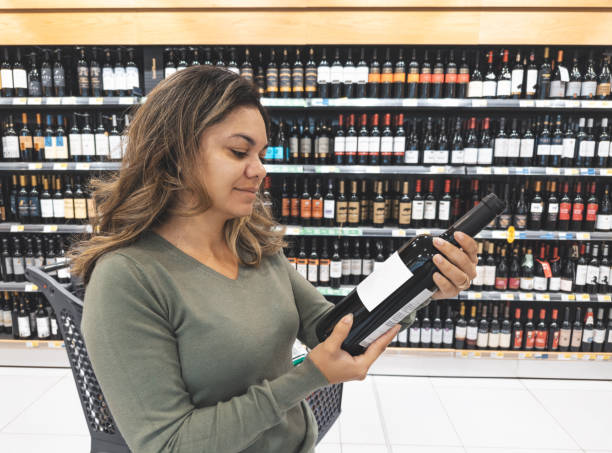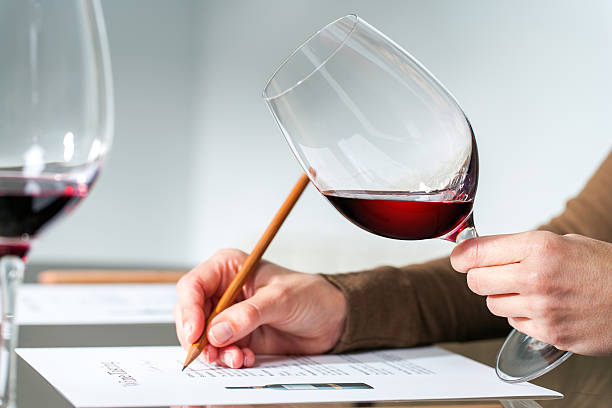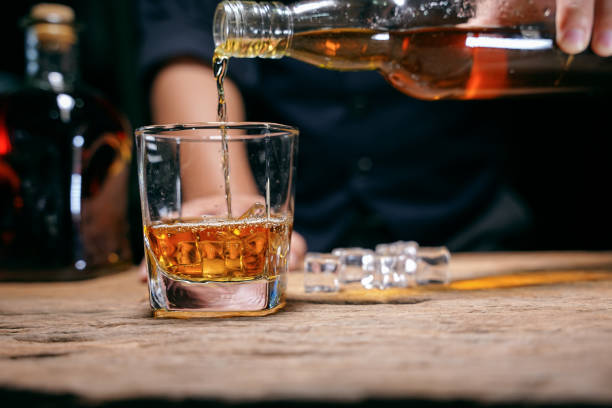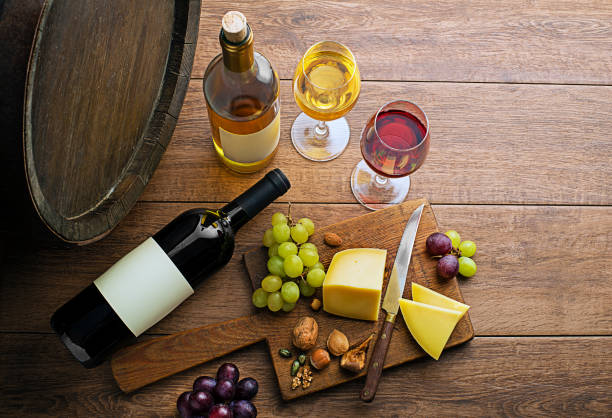Terroir can be used in many ways to describe wines.
The wide range of tastes is what makes wine so fascinating and why the job of a sommelier is so rewarding.
The term terroir, which is short for specificity, refers to the place where the wine was produced.
The term terroir is more precise and includes not only soil but also climate, terrain, aspect, and other factors that may differentiate a piece of land. Terroir encompasses not only the soil in a particular region but also its climate (and, more precisely, its weather and any local microclimate), the terrain where a vineyard is located, as well as the aspect of the vineyard and anything else that can differentiate one piece of land from another.
The same Chardonnay grape produces a variety of white wines, from creamy to rich and from minerally to dry. Chenin Blanc can also be dry or off-dry, with passion fruit notes, all the way to sweet mandarin orange.
The same is true for red wine: the thin-skinned Pinot grape, which is notoriously temperamental and can produce wines with headily aromatic red berry fruits in the right soils and climates; the floral notes with hints and cherry of Old World Cabernet are different to the New World flavors, such as black cherry, licorice, and black pepper. Malbec was originally from France but has become a favorite in Argentine with its jammy flavors, including plum, black cherry, and blackberry.
Every aspect of terroir, or the more meaningful notion or place of a location, plays a role in the final product, which is the drink that the sommelier offers their guests.
There are a few different types of soil, and while there is no scientific proof that the minerality of a soil will translate into the minerality of a wine, it’s clear something happens in terms of taste. Wines can be described as gravelly or flinty and even as having the aroma of wet cement! Even though the grapes are grown in the same soil, on the same vines (and even the same vineyard), and harvested at the same time, they can have different tastes. One wine may be described as having “very savoury aromatics and flavours similar to freshly-picked herbs,” while another, which is grown 10 feet from it, will be “dense and spicy.” The only difference between the two is the type of soil.
The climate is more complex than simply a ‘warm climate,’ or ‘cold weather’. Although grapes grown in warmer climates indeed produce more sugar (and therefore more alcohol), wines from cooler temperatures have less sugar and more acidity. A Cabernet Sauvignon produced in Napa Valley, for instance, will have less edge compared to the Bordeaux equivalent. The German Riesling grape also prefers warm summers with extended cool autumns.
It can tolerate a moderate climate, but a Sauvignon Blanc with a high acidity needs a cooler temperature. You can find Sauvignon Blancs from cooler New World regions and Washington, California, and other US states, as well as those from northern France.
Merlot is a superior red wine in New York, but only when grown in the best sites. It can be grown in milder areas of North Carolina’s northwestern region, but it must be planted in more protected locations. In the mid-Atlantic, however, Merlot produces very well.
It is also important to consider the terrain of the vineyard, including its elevation and the presence of plants, trees, and other flora.
You can taste Australian wines where the eucalyptus influence is very strong and comes from the vegetation that grows along the vineyard. Winemakers will sometimes use such characteristics to produce small parcels from vine rows that are closest to the source.
Mendoza, Argentina, has vineyards at an altitude of around 4,000 feet. These produce Malbecs that have a higher acidity due to the cooler night temperatures. These high altitudes also give some Argentine wines a special aging characteristic.
Scientists studied microbes on vineyard sites and in their wines. They were able to prove that there is a unique Biogeographic Fingerprint – a bio-indicator – which is based on types and quantities of fungi, bacteria, and yeast present in grape cane must. This fingerprint can be used to pinpoint the region of origin of the wine (and even the year of production). It’s only a guess as to whether or not this has an impact on the taste of the wine, but it certainly ties back to the concept of terroir.
Tradition, or the human element, can be added to climate, soil, and terrain in order to produce a “better wine,” so to speak.
The harvest time is a crucial factor in making wine. Picking earlier will result in wines with higher acidity but lower alcohol. Picking later will lead to wines with lower acids, higher alcohol or sweetness, and more subdued tannic acid.
Winemakers can also change the maceration period and use cold soak to extract the color and flavors of fruit from skins without removing bitter tannin. Pump-overs, depending on the wine or the winemaker, can be used to extract more tannin. Punch downs can be used by the winemaker to prevent skins from being too pulled and to add little or no oxygen to the fermentation.
The vessel in which wine is produced, aged, and stored has a profound effect on its character. Oak is used to add vanilla to wine, but it also helps to increase the wine’s oxygen exposure as it ages. It also helps to reduce tannins.
Steel tanks are used to make white wines that have a zesty flavor, though not exclusively. Steel tanks are used to make red wines, as well. They limit oxygen exposure and keep the wine fresh.
The choice is between screwcaps or cork closures. It is important to consider how to preserve the wine’s quality that the winemaker worked so hard to create. Screwcaps may have an image issue, and consumers believe screwcaps are associated with cheaper (and lower rate) wines.
There is a lot of evidence that shows that screw-capped older vintages not only prevent cork taint but also control the amount of air that enters the bottle each year.
Cork has its place, and, in many cases, it doesn’t make a difference whether the wine is in a screwcap or cork-capped bottle.
Terroir is the result of how winemakers use and interact with these environmental and practical tools in order to produce unique tastes. Individuality is the key to enjoyment.




